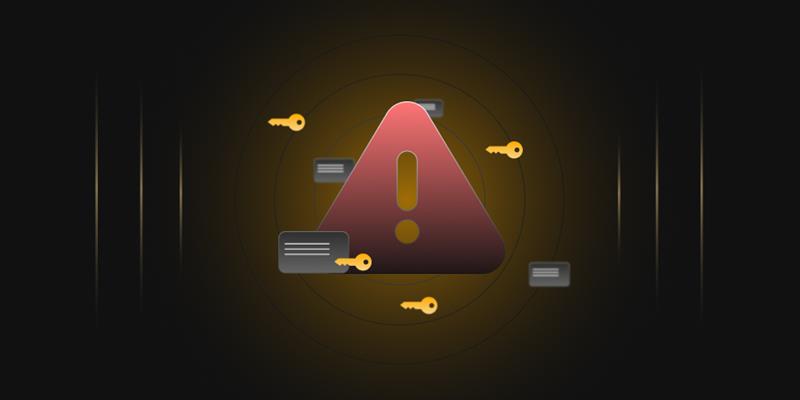In today’s digital age, online security is paramount. The rise of cyber threats and the importance of safeguarding sensitive information have led to the development of robust security protocols. Two of the most fundamental web security components are TLS/SSL and HTTPS. These acronyms may seem like alphabet soup, but they are crucial in ensuring your online interactions are safe and secure. In this blog, we’ll dive into TLS/SSL vs. HTTPS, exploring their similarities, differences, advantages, and history and ultimately providing recommendations for safe web browsing.
A Brief History
Before we delve into the technicalities, let’s take a quick trip down memory lane to understand how TLS/SSL and HTTPS existed.
TLS/SSL: A Secure Foundation
TLS (Transport Layer Security) and its predecessor, SSL (Secure Sockets Layer), are cryptographic protocols designed to secure data transmission over a network like the Internet. The SSL protocol was developed by Netscape in the mid-1990s, aiming to provide a secure way for websites to transmit sensitive information, such as credit card details, over the web.
Initially, SSL was proprietary and not widely adopted. However, it paved the way for the development of TLS, which was standardized by the Internet Engineering Task Force (IETF) in 1999 as TLS 1.0. Since then, TLS has seen multiple iterations, each offering enhanced security features and performance improvements. Currently, TLS version 1.3 is being used.
HTTPS: The Secure Web
HTTPS (Hypertext Transfer Protocol Secure) is the secure version of HTTP, the protocol that powers the World Wide Web. It’s essentially HTTP layered with TLS/SSL to encrypt data transmission between a user’s browser and a web server.
The concept of secure web browsing through HTTPS gained prominence in the mid-2000s when organizations like Google started advocating for its adoption. Today, HTTPS has become the standard for web security, with most websites using it to protect user data and maintain user trust.
TLS/SSL vs. HTTPS: Similarities and Differences
Now that we have a basic understanding of the history and purpose of TLS/SSL and HTTPS let’s explore their similarities and differences.
Similarities
-
Data Encryption
TLS/SSL and HTTPS are designed to encrypt data transmitted between a user’s browser and a web server. This encryption ensures that the data remains unreadable to unauthorized parties even if intercepted.
-
Authentication
TLS/SSL and HTTPS provide a level of authentication. Users can verify the identity of a website through the SSL/TLS certificate installed on the web server. This certificate is issued by a trusted Certificate Authority (CA), assuring users that they communicate with a legitimate website.
-
Data Integrity
These security protocols ensure that the data exchanged between the user and the web server remains intact and unaltered during transmission. Any tampering with the data would be detected.
Differences
-
Scope
TLS/SSL is a broader term encompassing various cryptographic protocols and security measures. HTTPS, conversely, refers to the secure version of the HTTP protocol.
-
Usage
TLS/SSL can secure various types of network communication beyond just web browsing. It’s utilized in email, file transfer, and more. HTTPS, however, is exclusively designed for securing web traffic.
-
Implementation
TLS/SSL operates at the transport layer of the OSI model, ensuring security for all applications using it. HTTPS, on the other hand, operates at the application layer and secures only web-related communication.
-
Port
TLS/SSL typically uses port 443 for secure communication, while regular HTTP uses port 80. The port number indicates the type of protocol being used.
Advantages of TLS/SSL and HTTPS
Understanding the advantages of TLS/SSL and HTTPS is crucial for appreciating their significance in online security.
Advantages of TLS/SSL
-
Data Privacy
TLS/SSL ensures that sensitive information, such as login credentials, payment details, and personal data, remains confidential and protected from eavesdropping.
-
Authentication
Websites with SSL/TLS certificates inspire trust. Users can verify a site’s authenticity by checking for the padlock icon in the address bar or examining the certificate details.
-
Data Integrity
TLS/SSL guarantees that data remains unaltered during transmission, preventing data corruption or tampering by malicious actors.
-
Compatibility
TLS/SSL is widely supported across various platforms and browsers, making it a versatile solution for secure communication.
Advantages of HTTPS
-
Improved Search Rankings
Search engines like Google prioritize HTTPS websites in their search results. This provides an SEO advantage for websites using HTTPS.
-
Trust and Credibility
HTTPS encrypts data and signifies a commitment to user security. Users are more likely to trust and engage with websites that display the padlock symbol.
-
Compliance
Many regulations and industry standards require using HTTPS to protect sensitive information, such as the Payment Card Industry Data Security Standard (PCI DSS) and the General Data Protection Regulation (GDPR).
-
Protection Against Man-in-the-Middle Attacks
HTTPS mitigates the risk of man-in-the-middle attacks, where an attacker intercepts and potentially alters the communication between the user and the server.
Recommendations for Secure Web Browsing
Now that we’ve explored the nuances of TLS/SSL and HTTPS let’s discuss some practical recommendations for secure web browsing:
-
Check for HTTPS
Always verify that a website uses HTTPS before sharing any sensitive information. Look for the padlock icon in the address bar and ensure that the URL starts with “https://” rather than “http://.”
-
Keep Software Updated
Ensure that your web browser and operating system are up to date. Security updates patch vulnerabilities that cybercriminals could exploit.
-
Use Strong Passwords
Create unique, strong passwords for your online accounts, and consider using a reputable password manager to keep track of them.
-
Beware of Phishing
Be cautious of emails, messages, or links that ask for sensitive information. Phishing attempts often mimic legitimate websites but are designed to steal your data.
-
Use Two-Factor Authentication (2FA)
Enable 2FA for your online accounts whenever possible. This adds an extra layer of security, making it more challenging for attackers to gain unauthorized access.
-
Educate Yourself
Stay informed about online security best practices and threats. Awareness is one of the most effective tools for protecting yourself online.
-
Regularly Clear Cookies and Cache
Clearing your browser’s cookies and cache can help remove potentially harmful tracking information and improve privacy.
-
Avoid Public Wi-Fi for Sensitive Transactions
Public Wi-Fi networks are often less secure. Avoid conducting sensitive transactions, such as online banking, on unsecured networks.
-
Use a Virtual Private Network (VPN)
Consider using a VPN to encrypt your internet connection, adding an extra layer of security when browsing from public networks.
Conclusion
TLS/SSL and HTTPS are steadfast guardians of our data in the ongoing battle to secure our online activities. These technologies have come a long way since their inception, evolving to meet the ever-growing challenges of cyber threats. At the same time, they share common data encryption, authentication, and data integrity goals, but their scopes and implementations differ, making them complementary components in online security.
TLS/SSL, with its versatility and wide-ranging applications, ensures secure communication across various network protocols. HTTPS, conversely, specializes in securing web traffic, enhancing trust, and providing SEO advantages for websites.
Following best practices for secure web browsing is essential in today’s digital landscape. Checking for HTTPS, keeping your Software up to date, using strong passwords, and staying vigilant against phishing attempts are just a few steps to protect yourself online. Employing additional measures such as two-factor authentication, VPNs, and regular education about online threats can further bolster your security.
As we look to the future, the importance of TLS/SSL and HTTPS will only continue to grow. Cybersecurity threats constantly evolve, making it crucial for individuals, organizations, and web developers to stay proactive in implementing and maintaining secure web communication.
In closing, TLS/SSL and HTTPS are the unsung heroes of the Internet, working tirelessly behind the scenes to safeguard our data and privacy. By understanding their roles, appreciating their advantages, and following recommended security practices, we can all contribute to a safer and more secure online environment. As technology advances, remember that security is a collective effort, and staying informed and proactive is our best defense in the digital age.




